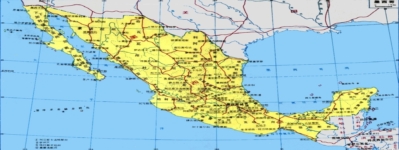The Hidden Power of Symbols in Myth and Games
1. Introduction: Unveiling the Power of Symbols in Myth and Games
Symbols are fundamental elements of human culture, serving as bridges between the tangible and intangible. They transcend mere images or words, embodying complex ideas, beliefs, and shared values. From ancient glyphs to modern icons, symbols shape our understanding of the world and influence our collective consciousness.
Throughout history, cultures have relied on symbols to communicate profound truths and moral lessons. Mythology, in particular, is rich with symbolic representations—lightning as divine power, the serpent as rebirth or danger, the phoenix as immortality. Today, these symbols continue to evolve, especially within the realm of entertainment and gaming, where they serve both aesthetic and functional roles.
This article explores the transformative role of symbols, examining their origins in myth and their modern adaptations in media and game design. By understanding these symbols’ deeper meanings, creators and consumers alike can unlock new levels of engagement and cultural insight.
- 2. The Role of Symbols in Mythology: Foundations of Cultural Narratives
- 3. Symbols in Modern Media and Entertainment: Bridging Ancient and Contemporary Narratives
- 4. The Power of Symbols in Game Design: Engaging and Immersing Players
- 5. Case Study: Le Zeus – Reimagining Myth through Playful Design
- 6. The Non-Obvious Depths of Symbols in Games and Myth
- 7. Educational Implications: Teaching Through Symbols
- 8. Ethical and Cultural Considerations in Symbol Usage
- 9. Future Trends: The Evolving Power of Symbols in Digital and Interactive Media
- 10. Conclusion: Embracing the Hidden Power of Symbols in Myth and Games
2. The Role of Symbols in Mythology: Foundations of Cultural Narratives
Symbols in mythology are not random images; they are carriers of collective identity, moral values, and existential truths. Cultures have used symbols to transmit shared beliefs across generations, reinforcing social cohesion and moral codes.
Archetypes—universal symbols identified by Carl Jung—serve as foundational elements in mythic storytelling. These include figures like the Hero, the Trickster, and the Wise Old Man, which recur across diverse cultures, illustrating the common psychological landscape of humanity.
For example, the lightning bolt often symbolizes divine power and wrath. In Greek mythology, Zeus’s control over lightning underscores his authority and celestial authority. Similarly, the serpent, as seen in stories from the Garden of Eden or Norse mythology, often signifies danger, rebirth, or hidden knowledge.
| Symbol | Cultural Meaning | Mythological Example |
|---|---|---|
| Lightning | Divine power, authority | Zeus (Greek), Thor (Norse) |
| Serpent | Rebirth, danger, knowledge | Naga (Hindu), Ouroboros (Ancient Egypt) |
| Phoenix | Immortality, renewal | Egyptian Bennu, Greek Phoenix |
3. Symbols in Modern Media and Entertainment: Bridging Ancient and Contemporary Narratives
Modern movies, literature, and video games frequently incorporate ancient symbols to enrich storytelling and evoke emotional responses. These symbols often carry layered meanings that resonate with audiences familiar with their historical or mythic origins.
For instance, filmmakers may adapt mythic motifs to create compelling narratives. The Marvel universe, for example, reimagines gods and symbols—like Thor’s hammer Mjolnir—as modern icons of power and responsibility. This blending of mythic symbols with contemporary storytelling creates a bridge between past and present.
Psychologically, familiar symbols evoke subconscious associations, making stories more impactful. The hero’s journey, often symbolized through a quest motif, remains central in both ancient myths and today’s blockbuster hits.
A striking example of modern reinterpretation is the character “Le Zeus,” where the myth of Zeus is reimagined in a playful, comic style, making an ancient figure accessible and humorous. Such adaptations demonstrate how symbols evolve, maintaining their core meanings while fitting new contexts. You can explore an innovative take on mythic reimagination by visiting that review link.
4. The Power of Symbols in Game Design: Engaging and Immersing Players
Game designers leverage visual and mechanic symbolism to deepen immersion. Visual symbolism includes art styles and icons that evoke specific themes—dark, gothic visuals for horror games or vibrant, fantastical art for adventure titles.
Symbolic mechanics are features within games that reflect deeper meanings. For example, a bonus feature called “Bonushunt FeatureSpins™” signifies heightened chances and excitement, serving as a metaphor for luck and opportunity. Such mechanics tap into players’ subconscious associations with luck, hope, and risk.
Narrative symbolism involves embedding mythic themes and stories into gameplay. This layering invites players to interpret symbols and mechanics beyond surface level, creating a richer, more meaningful experience.
Practical application of symbolic design:
- Choosing color palettes that evoke specific emotions or themes
- Incorporating iconography that resonates with cultural or mythic significance
- Designing game features that serve as metaphors for luck, fate, or challenge
5. Case Study: Le Zeus – Reimagining Myth through Playful Design
“Le Zeus” exemplifies how mythic figures can be transformed into engaging, humorous characters. Instead of a stern, authoritative god, “Le Zeus” appears as a cartoonish, approachable figure, using visual and narrative symbolism to redefine the myth.
The cartoonish style reduces intimidation, making the figure more relatable and humorous. This visual symbolism alters perception, shifting from awe to amusement—an example of how design choices influence user experience.
Additionally, features like the “Bonushunt FeatureSpins™” serve as a metaphor for luck and opportunity, inviting players to see chance as a playful, almost mischievous force. Such symbolic features connect the game mechanics with broader themes of fortune and risk, illustrating how symbols operate on multiple levels.
6. The Non-Obvious Depths of Symbols in Games and Myth
Symbols influence player behavior subconsciously, guiding decisions and emotional responses without explicit awareness. For example, the use of bright colors and dynamic sounds in bonus rounds can evoke excitement and anticipation, reinforcing positive feelings towards risk-taking.
Cultural differences also shape symbol interpretation. A symbol perceived as auspicious in one culture might be neutral or even negative in another. Recognizing these variations is crucial for respectful and effective use of symbols.
Over time, symbols evolve from their mythic origins into modern gaming mechanics. The lightning bolt of Zeus transforms into dynamic power-ups in video games, while mythic creatures inspire characters and storylines, demonstrating the enduring impact of symbolic storytelling.
7. Educational Implications: Teaching Through Symbols
Symbols are powerful pedagogical tools. Using myths and game symbols can foster cultural literacy by encouraging learners to interpret and analyze their meanings. For instance, understanding the symbolism of the phoenix can teach about themes of renewal and resilience.
Educational games that incorporate symbolic storytelling enhance critical thinking. By decoding symbols, students develop skills in interpretation, cultural awareness, and reasoning. Well-designed educational games, inspired by mythic and game symbols, serve as engaging platforms for experiential learning.
8. Ethical and Cultural Considerations in Symbol Usage
Creators bear responsibility for respectful representation of cultural symbols. Appropriating symbols without understanding their significance can lead to misinterpretation or offense. For example, using sacred symbols in commercial contexts should be approached with sensitivity.
Respectful adaptation involves research and collaboration with cultural representatives, ensuring symbols are portrayed authentically and thoughtfully. This approach preserves the integrity of the symbols and fosters cross-cultural understanding.
9. Future Trends: The Evolving Power of Symbols in Digital and Interactive Media
Emerging technologies like augmented reality (AR) and virtual reality (VR) are creating new symbolic landscapes. These immersive environments allow users to interact with symbols in ways previously unimaginable, deepening their emotional and cognitive engagement.
Interactive storytelling enables players to personalize symbols, forging unique connections with mythic elements. Such customization enhances immersion and emotional investment, making symbols more meaningful.
As digital media evolve, symbols have the potential to influence societal values—promoting inclusivity, resilience, or innovation—by embedding these themes into widely accessible interactive experiences.
10. Conclusion: Embracing the Hidden Power of Symbols in Myth and Games
Throughout history, symbols have been catalysts for cultural continuity and innovation. Their enduring power lies in their ability to encapsulate complex ideas and evoke subconscious responses, making them indispensable in storytelling—whether through myth or modern games.
As creators and consumers, exploring the depths of symbolic meaning enriches our understanding and appreciation of cultural narratives. The playful reimagining of mythic figures, like “Le Zeus,” exemplifies how symbols can be adapted to inspire new generations while respecting their origins.
“Symbols are the language of the soul—connecting past, present, and future in a continuous dialogue.”
By embracing the symbolic potential inherent in myth and games, we not only preserve cultural heritage but also harness a powerful tool for education, entertainment, and societal growth.









